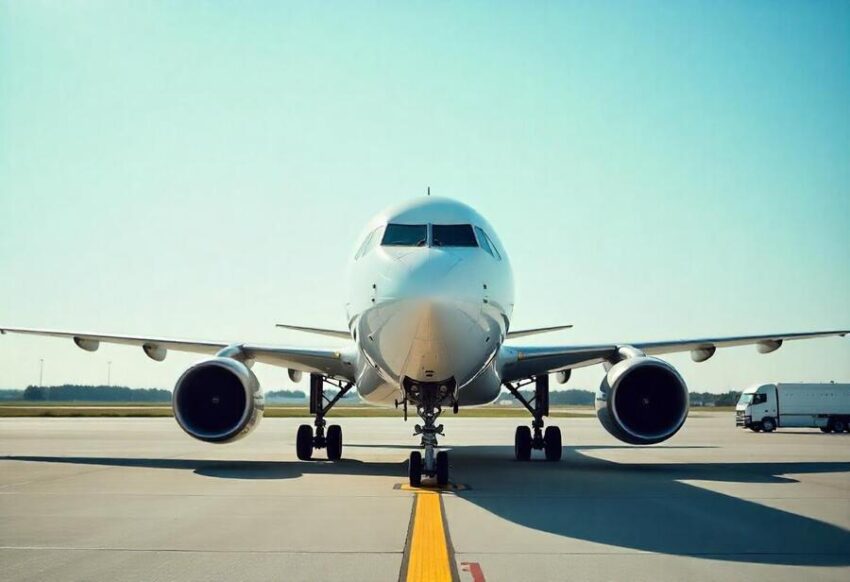

Breeze Airways is aggressively growing its U.S. West Coast network with the introduction of new routes and the takeover of routes previously formed out of Burbank as a competitor in the market pulls out. This strategic play enables Breeze to grow its footprint in vital markets, providing additional connectivity and travel opportunities for customers on the West Coast. With the opponent’s Burbank base shutting down, Breeze is looking to satisfy this demand by supplying a new option, offering an efficient service that is also competitively priced.
Breeze Airways Bold Strategic Expansion: New Destinations to be Served and Routes to be Flown
Breeze Airways is expanding its route map by adding new airports, including: Arcata/Eureka, Burbank; Eugene; Redmond; and Pasco/Tri-Cities. New services will launch from March 2026, to coincide with the carrier’s seasonal changes, to dovetail with IATA’s summer slot seasons. All of these Breeze routes will run on the carriers’ standard two-weekly frequency, and begin with three instead of Breeze’s 130-seat Airbus A220-300, albeit in a seating layout 10 more dense than the competitor’s offering, the Boeing 737-700 that seats 147 passengers.
Here are the new Breeze routes:
Start DateRouteBreeze’s FrequenciesCompetitor Ends OnCompetitor’s Standard FrequenciesMarch 11Burbank to ProvoFive weeklyNot servedNot servedMarch 12Burbank to Arcata/EurekaThree weeklyDecember 2Four weeklyMarch 13Burbank to RedmondTwo weeklyDecember 1Four weeklyMarch 13Redmond to Las VegasTwo weeklyAugust 11Two weeklyMarch 18Burbank to Pasco/Tri-CitiesTwo weeklyDecember 2Two weeklyMarch 19Burbank to Eugene*Two weeklyDecember 1Three weekly
*Competitor discontinued flights to Eugene in January 2025.
Route Performance: Analyzing Historical Data
According to the U.S. Department of Transportation (DOT) figures, the competitor also did well on 4 out 5 routes, achieving a load factor of 80% or higher. Yet it is worth noting that load factors alone don’t necessarily reveal the profitability of these routes, since they do not consider fare levels or operational costs.
Routes to Arcata/Eureka and Eugene averaged an 80 percent load factor from May 2024 through April 2025 and displayed good demand, the agency added. Similarly, Burbank-Pasco/Tri-Cities and Redmond were strong city pairs as they posted load factors between 82% to 83%. But other routes also at least to some extent have lower load factors, on the Burbank-Santa Rosa segment theridership was 65,000, on a load factor of 68%.
Challenges at Burbank: Competitor’s Struggles
So, while the competitor did have some success with its Burbank routes, the base itself was tough. These are routes the competitor introduced into the market over the last couple years since the 19 route launches, many of which failed. Significant early cuts to the route map included Bozeman, Grand Junction, and Phoenix Mesa with more to come in 2022 and 2024, such as Boise and Las Vegas.
Burbank operations’ closure this year marked a strategic move to more lucrative markets by the competitor. Breeze Airways, though, is seizing on those underappreciated routes and taking a different approach — doing business while flying fewer flights with smaller planes.
Evaluating the Competitor’s Route Performance
Here’s a look at the competitor’s performance out of Burbank in the 12 months leading up to April 2025:
RouteService EffectiveDateRound-Trip Passengers (May 2024 – April 2025)Average Load FactorBurbank – Arcata/EurekaMay 202456,60080%Burbank – EugeneMay 202450,00080%Burbank – Pasco/Tri-CitiesMay 202130,80082%Burbank – RedmondMay 202347,10083%Redmond – Las VegasSeptember 202330,00072%
While the competitor did have strong demand on some city-pair routes, it could not make Burbank work. Breeze Airways is betting that with a more adaptable approach — deploying smaller planes less frequently — it can perform better and be more profitable.
Breeze’s Plans for Long-Term Success
“Breeze Airways is confident in the new routes to commence in March 2026. Leveraging markets known for high demand and a proveable business results, Breeze will provide a more affordable flying option while adapting to the characteristics of each market. The airline also plans to do less flying with smaller aircraft, which could potentially lead to improved returns and higher efficiency.
Conclusion
Breeze Airways expanding its West Coast presence by acquiring former Burbank routes from the rival is a savvy play in a competitive market. And with the more flexible capacity and smaller aircraft, Breeze is planting the seeds to succeed at something the rival struggled with. As those new routes come online in 2026, Breeze will have to keep tweaking its approach base on demand and performance data, but the startup is well set up to step into the void and provide new options for travelers.
The post Breeze Airways Expands U.S. West Coast Network with New Routes, Taking Over Former Burbank Base After Competitor’s Exit, Strengthening Its Presence in Key Markets: You Need to Know appeared first on Travel And Tour World.July 17, 2025 at 10:30PM







0 Comments:
Post a Comment